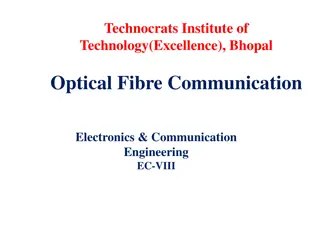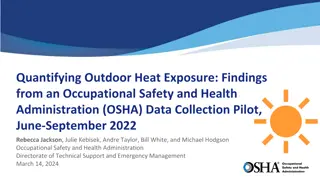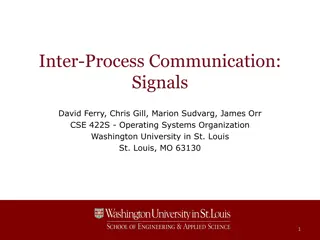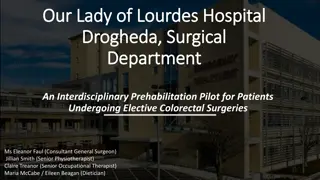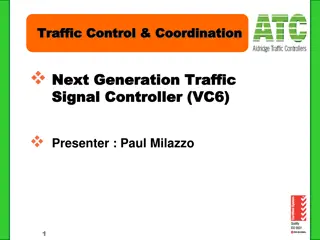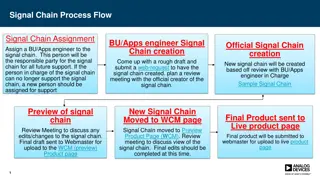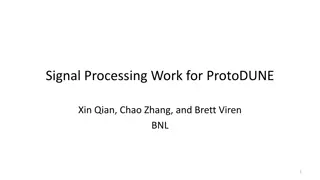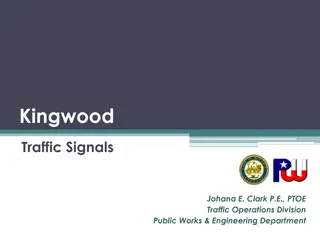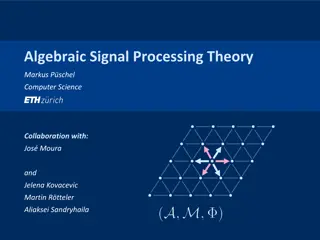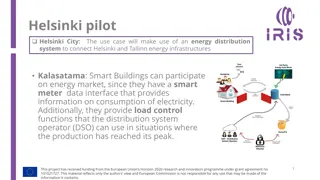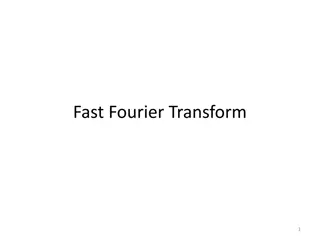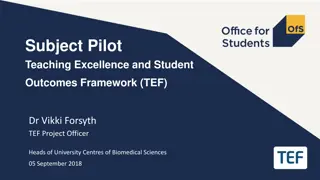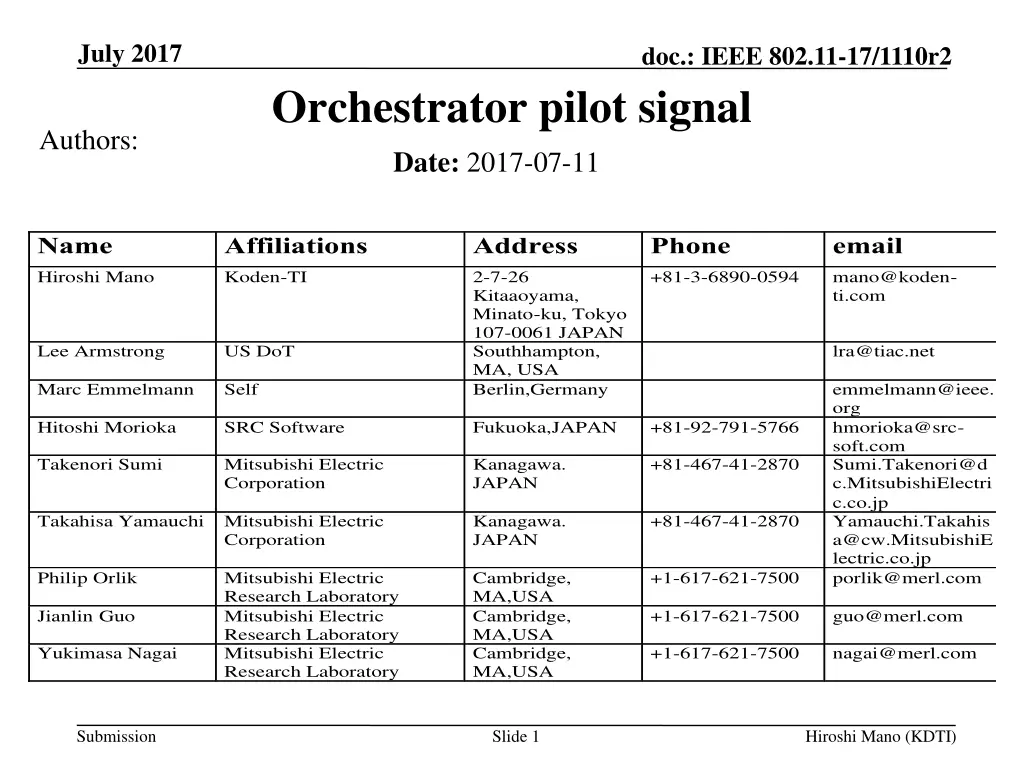
Orchestrator Pilot Signal Mechanism for Improved Spectrum Sharing
Proposal of a new Orchestrator pilot signal mechanism to enhance spectrum sharing efficiency among 802.11 devices in unlicensed bands. The solution addresses current inefficiencies in spectrum sharing mechanisms, emphasizing the reduction of in-band spectrum resource consumption, waiting and reaction times, and the facilitation of efficient channel usage without competing with existing approaches. Potential solutions include utilizing existing mechanisms on dedicated coordination channels and implementing common pilot signals for arbitration.
Uploaded on | 1 Views
Download Presentation

Please find below an Image/Link to download the presentation.
The content on the website is provided AS IS for your information and personal use only. It may not be sold, licensed, or shared on other websites without obtaining consent from the author. If you encounter any issues during the download, it is possible that the publisher has removed the file from their server.
You are allowed to download the files provided on this website for personal or commercial use, subject to the condition that they are used lawfully. All files are the property of their respective owners.
The content on the website is provided AS IS for your information and personal use only. It may not be sold, licensed, or shared on other websites without obtaining consent from the author.
E N D
Presentation Transcript
July 2017 doc.: IEEE 802.11-17/1110r2 Orchestrator pilot signal Date: 2017-07-11 Authors: Name Hiroshi Mano Affiliations Koden-TI Address 2-7-26 Kitaaoyama, Minato-ku, Tokyo 107-0061 JAPAN Southhampton, MA, USA Berlin,Germany Phone +81-3-6890-0594 email mano@koden- ti.com Lee Armstrong US DoT lra@tiac.net Marc Emmelmann Self emmelmann@ieee. org hmorioka@src- soft.com Sumi.Takenori@d c.MitsubishiElectri c.co.jp Yamauchi.Takahis a@cw.MitsubishiE lectric.co.jp porlik@merl.com Hitoshi Morioka SRC Software Fukuoka,JAPAN +81-92-791-5766 Takenori Sumi Mitsubishi Electric Corporation Kanagawa. JAPAN +81-467-41-2870 Takahisa Yamauchi Mitsubishi Electric Kanagawa. JAPAN +81-467-41-2870 Corporation Philip Orlik Mitsubishi Electric Research Laboratory Mitsubishi Electric Research Laboratory Mitsubishi Electric Research Laboratory Cambridge, MA,USA Cambridge, MA,USA Cambridge, MA,USA +1-617-621-7500 Jianlin Guo +1-617-621-7500 guo@merl.com Yukimasa Nagai +1-617-621-7500 nagai@merl.com Submission Slide 1 Hiroshi Mano (KDTI)
July 2017 doc.: IEEE 802.11-17/1110r2 Abstract Proposal of a new Orchestrator pilot signal mechanism that improves the efficiency of spectrum sharing among 802.11 devices in unlicensed band. Submission Slide 2 Hiroshi Mano (KDTI)
July 2017 doc.: IEEE 802.11-17/1110r2 Problem statement Current sharing mechanism on un-licensed band not efficient Energy detection Different RAT use different approaches of energy detection to assess if the media is available Consumes in-band capacity (i.e.: waiting time to detect & response time to react) Common Data Base for (secondary) spectrum usage 11af provides access to data base (i.e.: grant access to a given band) 11af does not coordinate spectrum usage (per transmission) among secondary users We will see a multiplicity of upcoming unlicensed shared spectrum (large amount of potential frequencies to operate on) Submission Slide 3 Hiroshi Mano (KDTI)
July 2017 doc.: IEEE 802.11-17/1110r2 What we want Reduce the consumption of in-band spectrum resources for arbitration. Reduce the waiting and reaction times. Reduce the time to find potential communication partners on different channels channels available to operate in Escape the 5G prisoner s dilemma Provide a WiFi-specific, optional mechanism for improved and controlled channel usage While not competing with 3GPP approaches Autonomous operation is the still the key of IEEE 802.11 Submission Slide 4 Hiroshi Mano (KDTI)
July 2017 doc.: IEEE 802.11-17/1110r2 Potential solutions Use existing mechanisms on dedicated coordination channels to optimize WiFi behavior Enhanced neighbor reports Optimized, dynamic adjustments of contention window or energy detection This proposal focuses on this aspect as one potential solution Common pilot signal for arbitration Submission Slide 5 Hiroshi Mano (KDTI)
July 2017 doc.: IEEE 802.11-17/1110r2 Propose to create new arbitration mechanism Create new arbitration mechanism by using common pilot signal in dedicated spectrum or In a dedicated channel Dedicated frequency shall be allocated to every single system that is an entity of sharing spectrum. The pilot signal is transmitted by every single system by using common PHY modulation. The pilot signal contains the information improving the arbitration to avoid conflicts of the in-band signal such as, Geographical location of station Transmit power Required D/U Time interval of transmitting Etc,. Every single system controls their transmission timing and power by using information received by the pilot signal Try to be as much as possible technology-agnostic Submission Slide 6 Hiroshi Mano (KDTI)
July 2017 doc.: IEEE 802.11-17/1110r2 Two potential approaches for Orchestration Pilot Signal Use in-band spectrum Very narrow band signal Transmitted in channel gaps Avoiding interference with active channels Pilot channel Use of dedicated channels In-band channel Out-of-band (new) channel Submission Slide 7 Hiroshi Mano (KDTI)
July 2017 doc.: IEEE 802.11-17/1110r2 In-band channel arbitration mechanism Allocate pilot signal at the edge of existing channel Allocate one or more pilot signal to each system. Same system share the pilot signals Using multiple pilot signal to send more information. Specify a new RAT for pilot signal that can be transmit and receive the information by all of system. Pilot1-1 Pilot1 Pilot2 Pilot1 Pilot2 Pilot3 Pilot3 Pilot2-2 Pilot3-2 Pilot2-1 Pilot301 Pilot1-2 Submission Slide 8 Hiroshi Mano (KDTI)
May 2014 doc.: IEEE 802.11-17/1110r2 Interference by narrow signal on the null point Narrow signal can be share the null point of OFDM. Interference impact is 20dB lower than wide band signal at the center null point of channel Interference impact is 30dB lower than wide band signal at the channel edge. Plot Desire/Un-desire power ratio @10% outage of through put. iPerf 802.11AP 802.11STA Desire : OFDM 6Mbps, f=2442MHz Compare proposed Emulator and RF circuit Interference Un-desire: OFDM or CW, f=variable D/U ratio @ 10% outage of through put (Desired signal frequency = 2442 MHz) 20dB at the center null point 40 30dB at the channel edge "CW (Emulator)" 30 20 "ODFM (Emulator)" 10 D/U (dB) "CW (RF)" 0 -10 "OFDM (RF)" -20 -30 2400 2410 2420 2430 Undesired signal frequency (MHz) 2440 2450 2460 2470 2480 Submission Hiroshi Mano (KDTI/University of Slide 9
July 2017 doc.: IEEE 802.11-17/1110r2 Out of band channel arbitration mechanism Allocate a dedicated pilot channel Allocate sub channel to each system Same system share the sub channel Specify a new RAT for pilot signal that can be transmit and receive the information by all of system Pilot channel SubCh1 SubCh2 SubCh3 ] SubCh2 SubCh1 SubCh2 SubCh1 SubCh3 SubCh3 Submission Slide 10 Hiroshi Mano (KDTI)
September 2017 doc.: IEEE 802.11-17/1110r2 Previous Discussion in IEEE802.15 IEEE802.15.4g Multi-PHY Management (MPM) The intending NC receives Enhanced Beacon (EB) from the existing NC using Common Signaling Mode (CSM). The intending NC chooses operating channel based on EB information. Submission Slide 11 Hiroshi Mano (KDTI)
July 2017 doc.: IEEE 802.11-17/1110r2 Discussion topics What is the mean of System ? A Wireless system which use unlicensed spectrum shared with 802.11. What system are targeted to arbitrated by this proposal? 802.11 and 802.11 802.11 and radar (reduce the undesired miss detection of DFS) 802.11 and 802.xx Submission Slide 12 Hiroshi Mano (KDTI)
July 2017 doc.: IEEE 802.11-17/1110r2 Q & A Submission Slide 13 Hiroshi Mano (KDTI)
September 2017 doc.: IEEE 802.11-17/1110r2 Straw Poll(1) Would you like to receive more information on use of Common Signaling Mode of IEEE802.15.4g Result: Yes: No: Abstain: Submission Slide 14 Hiroshi Mano (KDTI)
July 2017 doc.: IEEE 802.11-17/1110r2 Straw Poll (2) Should further discussion of this topic occur a) Within a (new) TIG b) Within a (new) Study Group with the goal of creating a PAR c) Continue within WNG a: b: c: Submission Slide 15 Hiroshi Mano (KDTI)

